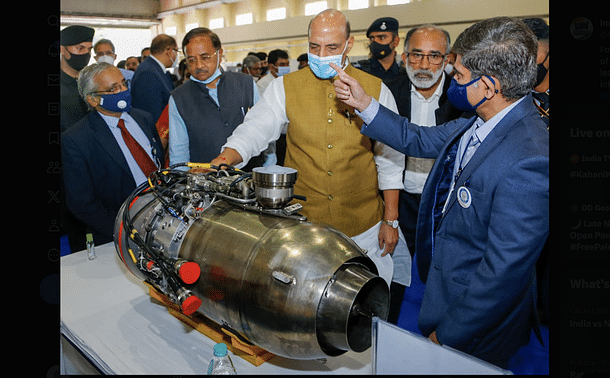Defence
'Nirbhay' Long-Range Cruise Missile Is Under Consideration For Induction In All Three Services: Here's Everything About It
Ujjwal Shrotryia
Nov 15, 2023, 03:00 PM | Updated 03:00 PM IST
Save & read from anywhere!
Bookmark stories for easy access on any device or the Swarajya app.


The government of India is considering a proposal to induct the Defence Research and Development Organisation (DRDO)-developed 'Nirbhay' long-range cruise missile in all three services in large numbers.
These missiles will be a part of the rocket forces that the government recently gave approval for and will complement the BrahMos supersonic cruise missile, Pralay tactical ballistic missiles, Shaurya, and potentially even the Agni-P medium-range ballistic missiles.
Earlier, in 2021, the centre had approved the induction of the Nirbhay cruise missile for two services.
However, according to media reports, one service has sent a proposal to induct these missiles in large numbers. It is this proposal that the government is considering.
Here is everything you need to know about the deadly Nirbhay missile that will be a part of India's rocket forces and serve as a key deterrent against China:

Nirbhay missile, developed by DRDO, is designed to destroy strategic targets at a maximum range of 1,000 kilometres.
It was first tested in March 2013 from the Integrated Test Range at Chandipur in the Balasore district of Odisha. The test, however, failed as it veered off its pre-planned trajectory, forcing the designers to destroy the missile in mid-air to avoid the risk of damage to human habitations.
The 1,500 kg missile can carry a conventional warhead of 450 kg, or a 12 kilo-ton nuclear warhead.
The second test in 2014 was a success as the missile precisely hit its target 1,000 kilometres away. The two-stage missile is 6 metres long, 0.52 metres wide, with a wingspan of 2.7 metres.
The initial lift-off is provided by a solid-fueled rocket booster motor developed by the Advanced Systems Laboratory, which takes the missile to a certain predetermined altitude and velocity.
Following the initial launch, the solid rocket booster motor separates, and the missile's turbojet/turbofan engines take over. These engines power the missile for the entire remaining flight.
Mid-way in the flight, the missile opens its wings, giving the missile additional lift. It also allows the missile to become more manoeuverable and helps the missile change its trajectory.

Navigation System
It can fly anywhere between 100 metres to 5 kilometres altitudes, in terrain-hugging mode (flying very close to the ground), thus allowing it to evade detection by radars, giving the designated target very small reaction time for taking countermeasures against the missile.
The subsonic missile, capable of flying at a speed of 0.7 Mach (approximately 860 kmph), is guided by an advanced inertial navigation system, indigenously developed by the DRDO lab, Research Centre Imarat, augmented by the Indian Regional Navigation Satellite System — IRNSS/NavIC-based global navigation satellite system.
Terminal guidance is provided by an active radar homing seeker, which precisely homes the missile to its target with a circular error of probability of less than 5 metres.
Small Turbofan Engine (STFE)
The initial versions of the missile were powered by a Russian turbojet engine, NPO Saturn 36MT. These missiles were also deployed in limited numbers against China following the clashes at Galwan in June 2020.

From October 2020, multiple tests of the Nirbhay missile, equipped with the indigenously developed small turbofan engine (STFE), previously known as the Manik engine, were conducted.
STFE is a 400 kgf thrust-class engine that has been developed by the Gas Turbine Research Establishment. According to Dr S Christopher, the ex-chairman of DRDO, the STFE is more economical than the Russian NPO Saturn 36MT engine.
ITCM, LR-LACM And Its Variants
The indigenous technology cruise missile (ITCM), whose existence was first revealed in 2020, serves as a technological demonstrator program for demonstrating the capabilities of the STFE engine, and other upgrades.
The last flight test of ITCM powered by the STFE engine conducted in February 2023 was deemed successful, following three unsuccessful tests between 2020 and 2022.

ITCM will also demonstrate upgraded radio-frequency and other advanced sub-systems.
An upgraded land-based Long-Range Land Attack Cruise Missile version of Nirbhay will be developed using the technologies successfully demonstrated in the ITCM test.
Another air-launched variant for the air force will also be developed using the same technologies developed in the ITCM, which can be fired from Tejas Mk-1A, Mk2, Su-30 MKI, and Rafale fighter jets.
Staff Writer at Swarajya. Writes on Indian Military and Defence.





